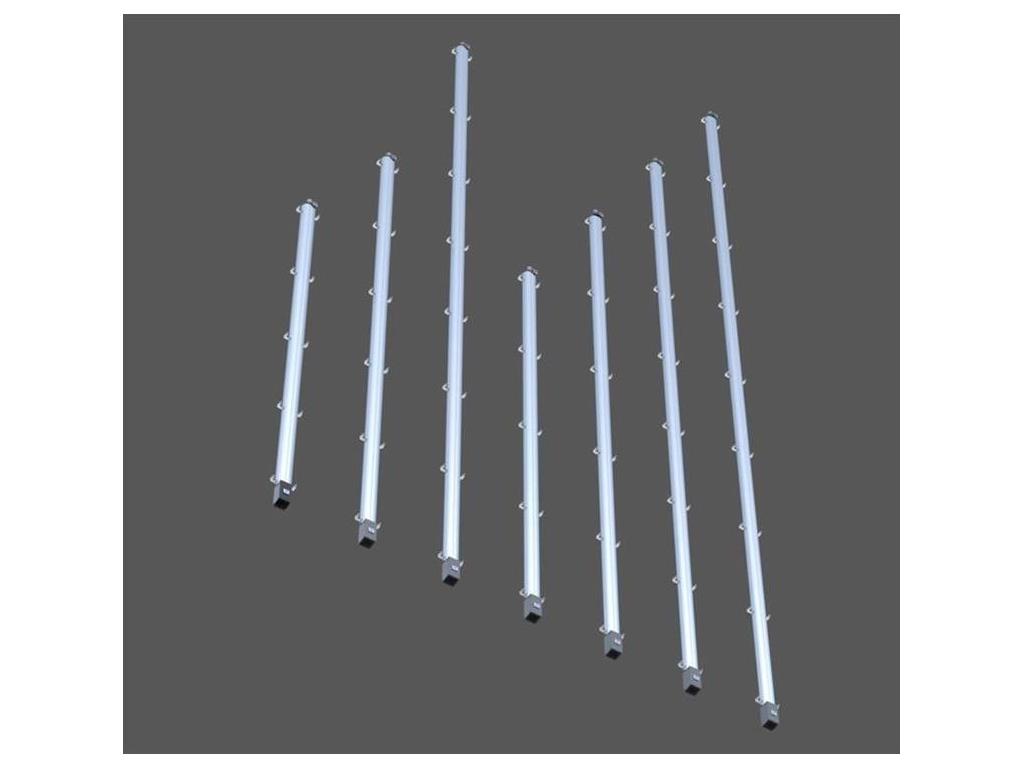-
What is Radiant Heating?
The 3 basic needs of human beings are nutrition, shelter (protection) and reproduction needs. Undoubtedly, another important sub-element arising following the need for shelter is heating. By sheltering in caves, early humans found a way to protect themselves from the dangers of wild animals, the threats posed by different clans, and most importantly, the harsh conditions of nature. Again, when there were seasonal differences and they could not benefit from the blessings of the Sun, which warms our world, due to reasons such as wind and covered skies, they made up for this deficit by lighting a fire in the caves they sheltered in. This had an important meaning for them, such as bringing the sun into the cave. This lit fire also set the first example of radiant heating. Briefly, radiant heating is the heating of other objects by the rays emitted by a flame or the surface of a heated object. The sun's heating of our world is the best example of a radiant heating system.
How Radiant Heaters Work?
In the emergence of radiant heaters, humankind was inspired by nature, as it has been many times. While you are wandering around in cloudy weather in the autumn and winter seasons, think of how the sun, which suddenly shows its face through the clouds, warms you sweetly. Sometimes even in such weather, turning your back to the sun and saying a deep “ohh!” Don't you pull away and think you're "warm to the bone"? The reason for this warming is not the increase in temperature in the air with the manifestation of the sun, but the contact of the rays of the sun with your body. The emergence of the radiant heater idea was based on exactly this basic principle.
Conventional (traditional) heaters heat the air. According to general physics rules, the heated air rises and the hot air condenses in the ceiling of the heated space. In structures with low ceilings, small partitioned rooms (such as homes), conventional heaters can be used reasonably. However, in needs such as factory heating, warehouse heating, warehouse heating, hangar heating, workshop heating, indoor gym heating, cafe heating, restaurant heating, mosque heating, poultry heating and open space heating, conventional heating techniques, condensation of hot air on the ceiling, ceiling, It is considered reasonable due to reasons such as serious heat leaks in roof systems and cannot provide sufficient and homogeneous heating by incurring serious costs.
Radiant heaters work as follows; It consists of a radiant heater, burner, radiant tube, reflective panels and vacuum fan. Thanks to the long flame formed as a result of the operation of the radiant heater, the surfaces of the high temperature resistant radiant pipes that will provide the radiation are heated. Radiation occurs in the heated radiant pipes and radiates this radiation. The rays emitted from the upper surface of the pipes, on the other hand, are reflected down by the reflectors on the upper part of the system. As a result of this whole process, the heat generated by the combustion of the gas in the system is converted into the radiation emitted by the radiant pipes, and the objects in the reflection area of the reflective panels of the device are heated.
What are the Radiant Heater Types?
It is very difficult to heat large volumes with conventional heating systems. Especially when it comes to outdoor heating, radiant heating is the system with the best performance. In radiant heating systems, natural gas is generally used as an energy source.
On the U-tube radiant heater, the fan is still connected at the end of the last tube, but since the device is a flat type heater bent in a “U” shape right in the middle, the surface of the coldest tube and the surface of the hottest tube come together. For example, a heater with a hottest surface of 500ºC will have a coldest surface of around 150ºC and these two surfaces are located side by side. The surface of the pipe, which is located next to the pipe whose surface temperature is measured at 300ºC on the same heater, is still around 300ºC. This feature allows U-tube radiant heater models to have a more homogeneous heat distribution compared to straight-tube heater types. As a result, U-tube heater models can better meet more aggressive heating and local heating needs, and they meet their outdoor heating needs with higher performance. Its usage areas are large volume spaces such as factories, warehouses, greenhouses, indoor sports halls and hangars.
Straight pipe radiant heater systems, on the other hand, are generally used in large-volume places such as factories, warehouses, greenhouses, indoor sports halls and hangars that have good thermal insulation and require low heat power.
While choosing the tubular radiant heating option, all criteria of the area to be applied should be taken into consideration and a serious exploration study should be carried out.
What are the Usage Areas of Radiant Heaters?
The usage purposes and areas of each of the Tubular Radiant Heater models were determined by considering the emerging needs and efficiency expectations, and the design and production stages were oriented in this direction.
Tubular type radiant heating systems minimize the heating costs that will occur in the enterprises, with the traditional heating methods and the most efficient application in the building, with a saving of 25% - 60%. The spaces where tubular type radiant heating systems are applied become an option that contributes to the protection of nature and to the prevention of the greenhouse effect that causes global warming, with the savings realized as a result of the efficiency performance achieved. In addition, while it causes usable areas not to be wasted with heating equipment due to its application method, it also contributes to visual integrity by projecting stylish, decorative designs in line with the demand in the place to be applied.





